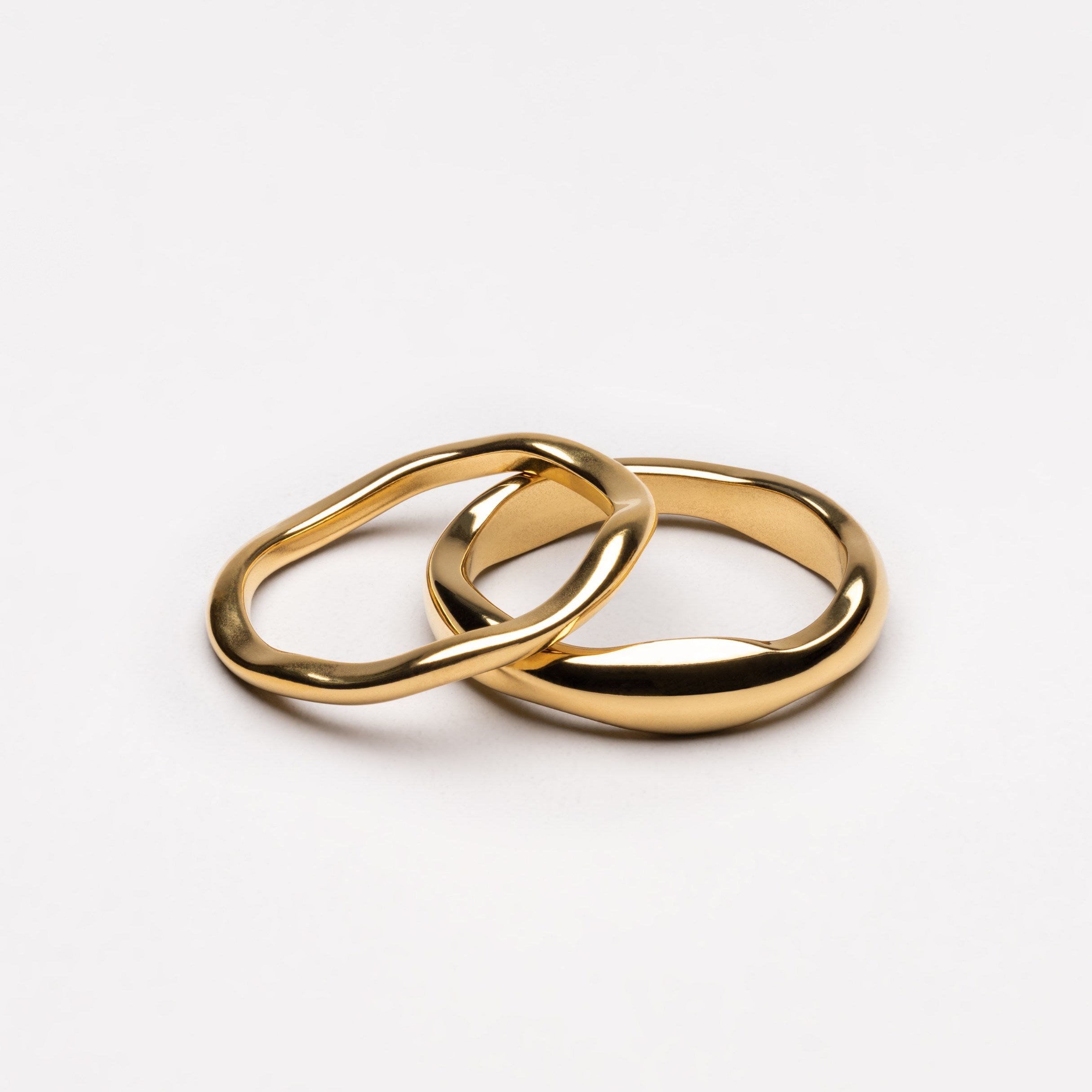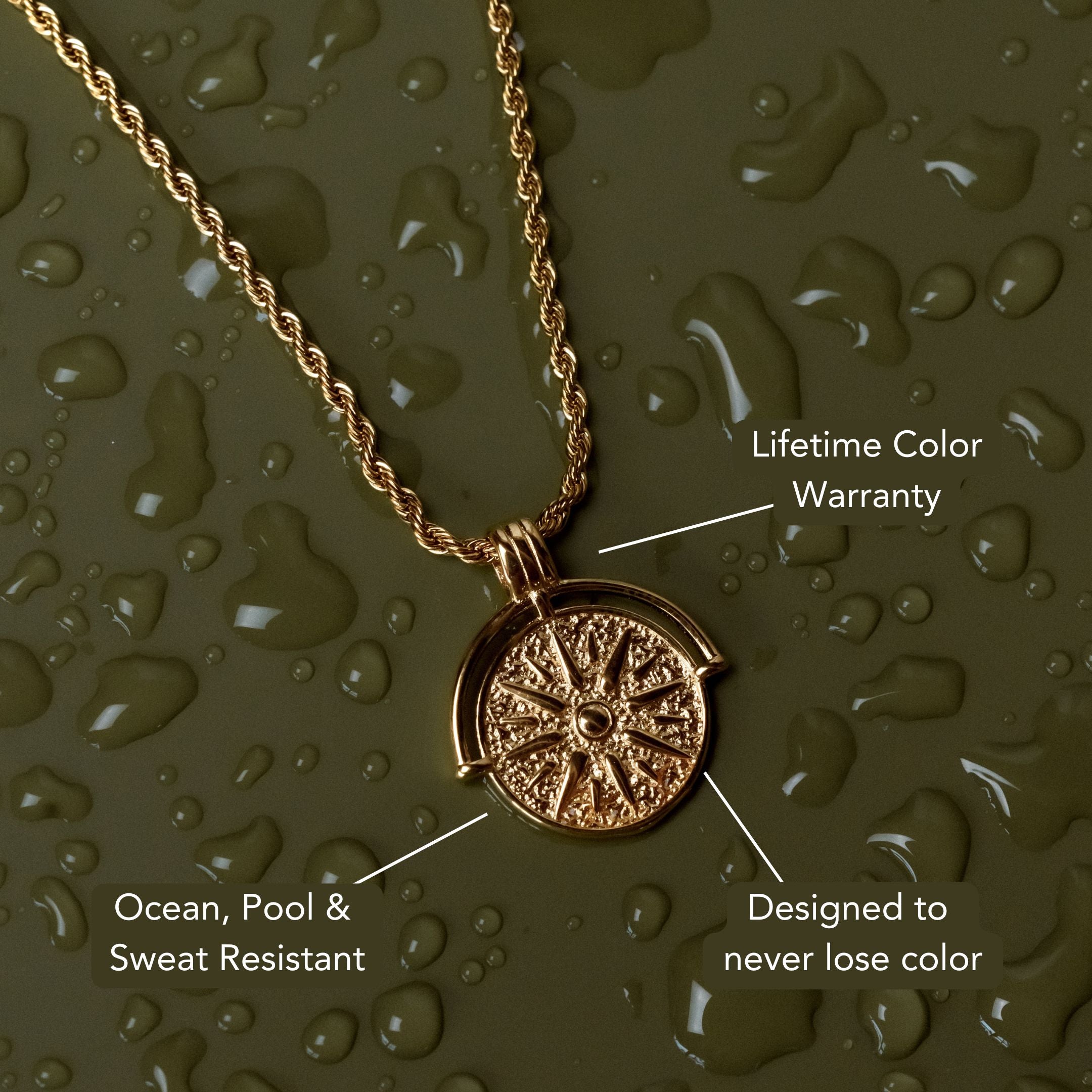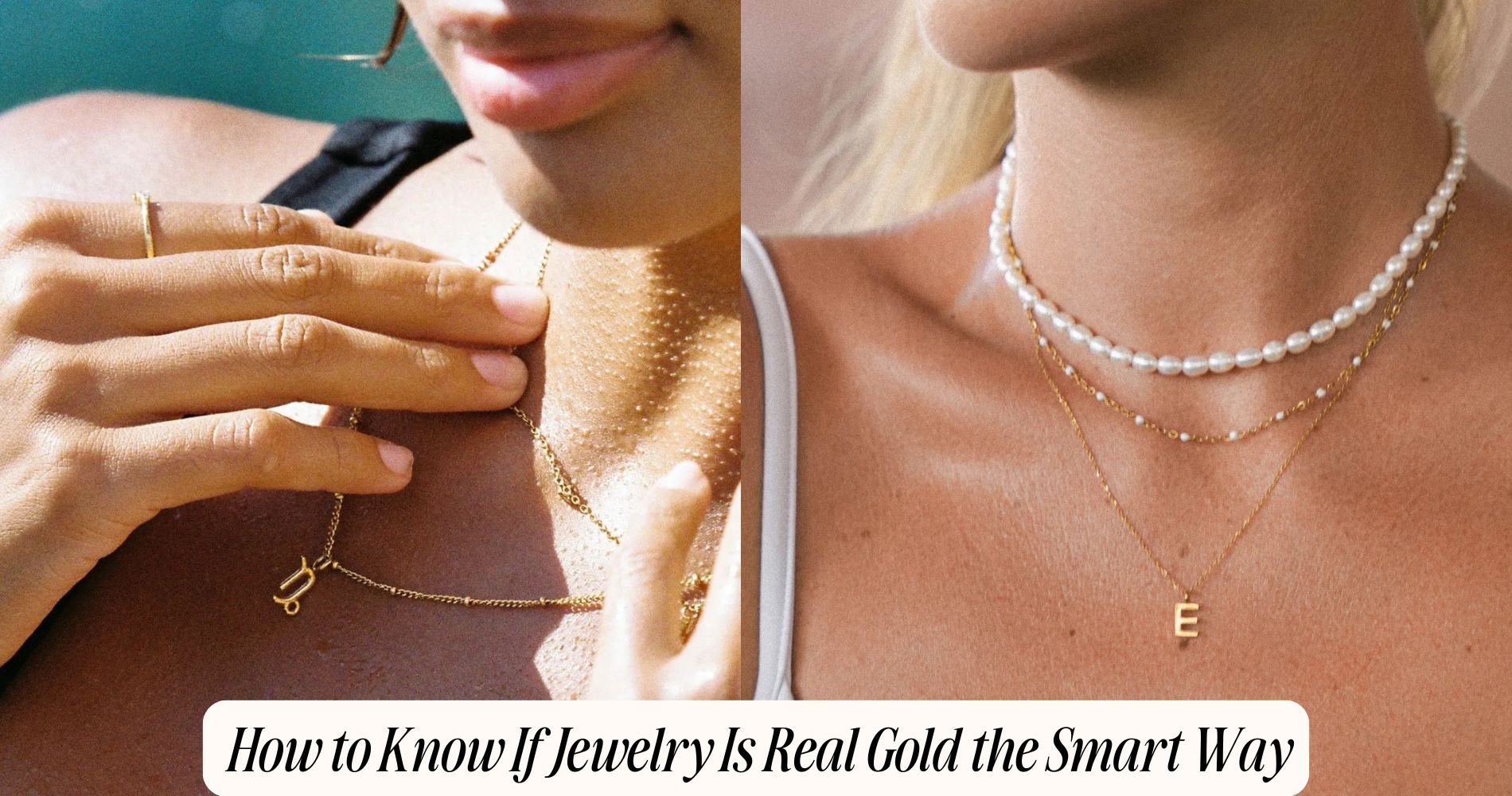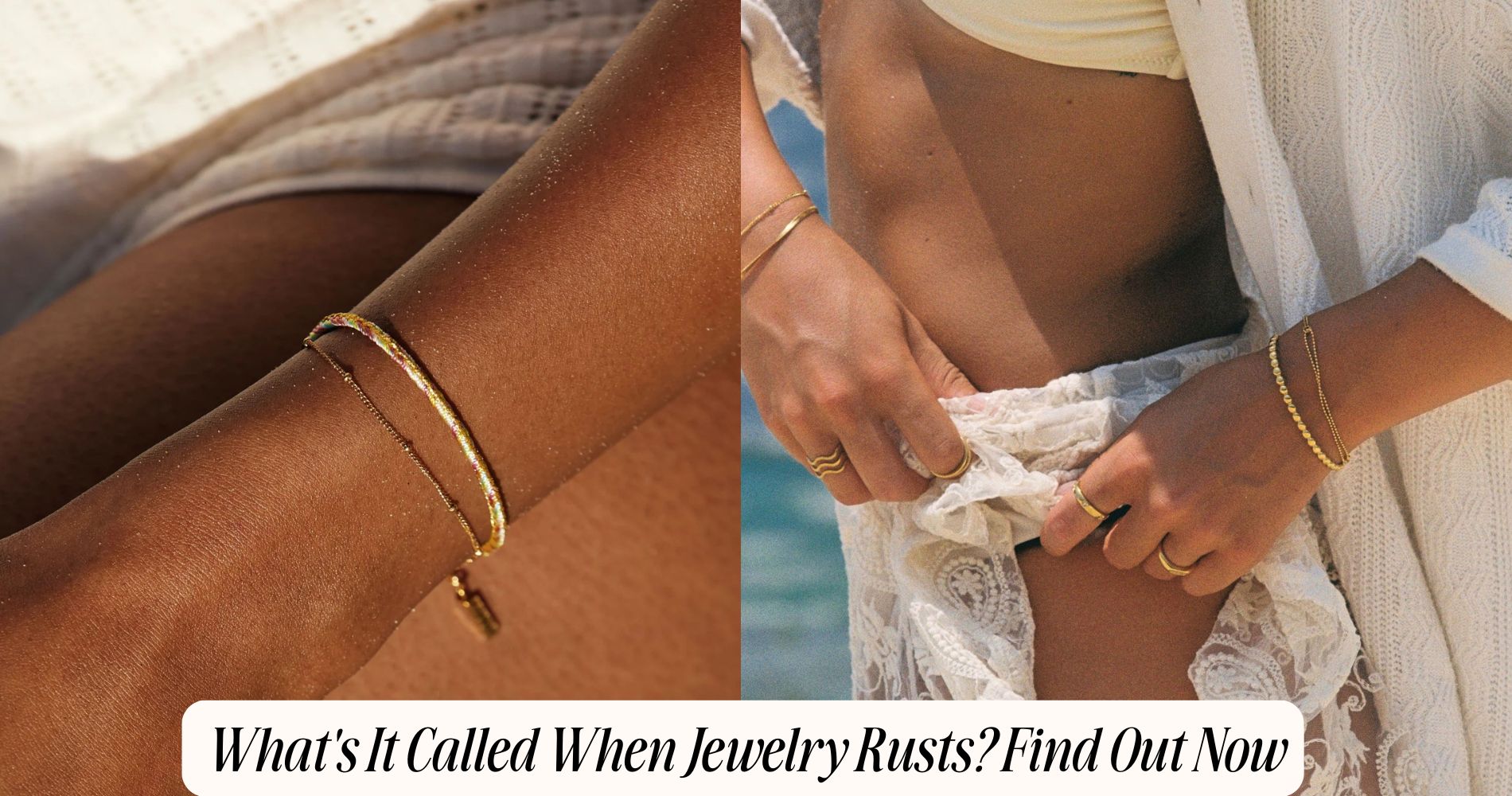
What Jewelry Can You Wear in the Pool – Stay Stylish and Smart
Wondering what jewelry can you wear in the pool without ruining it? The key is to stick with durable materials like stainless steel, titanium, or platinum, paired with tough gemstones such as diamonds, sapphires, or rubies. These hold up well against chlorine and salt water. Just remember to rinse and dry your jewelry after swimming to keep it looking sharp. Steer clear of porous stones, plated metals, and costume jewelry—they break down quickly in water. For pieces that combine safety with beach-ready style, check out our Sun Jewelry collection. Stay tuned to discover which styles offer the perfect mix of durability and elegance.
Understanding Pool Water and Its Effects on Jewelry
Although swimming pools may look clean and inviting, the water often contains chlorine or salt, both of which can react with jewelry metals and gemstones. When you swim, pool water chemistry plays a vital role in the longevity of your jewelry.
Chlorine, a powerful oxidizer, accelerates jewelry oxidation, causing discoloration, tarnish, and even pitting on metals like silver, copper, and low-karat gold. Saltwater isn’t harmless either; it promotes corrosion and can erode metal settings, loosening stones.
Gem materials such as opals and pearls absorb chemicals, leading to surface dullness or structural damage.
After swimming, rinse your jewelry thoroughly with fresh water and dry it gently. This simple step helps remove residual chemicals and minimizes long-term damage, preserving your jewelry’s appearance and integrity.
Best Metals for Pool-Friendly Jewelry
If you're looking for jewelry that can withstand pool conditions, focus on metals known for their chemical resistance and durability. Stainless steel is an excellent choice for poolside accessories, as it resists corrosion from chlorine and saltwater.
Titanium offers a lightweight, hypoallergenic option that maintains its shine and structure, even after repeated water exposure.
Platinum stands out for superior durability and doesn’t tarnish, making it ideal for daily wear in or out of the pool.
For waterproof watches, opt for models made of marine-grade stainless steel or titanium to ensure long-term performance.
After swimming, always rinse your metal jewelry with fresh water and dry thoroughly to remove residual chemicals. This simple care routine helps extend the life and luster of your pool-friendly jewelry.
Gemstones That Can Withstand Pool Conditions
While choosing the right metal lays the foundation for pool-friendly jewelry, selecting durable gemstones is just as important. Not all gemstones offer the same resistance to chlorine, salt, and sudden temperature changes.
For your poolside accessories, opt for stones like diamonds, sapphires, and rubies. These have high hardness on the Mohs scale, making them less likely to scratch, pit, or discolor in harsh pool environments.
Avoid porous or soft stones that can absorb chemicals or crack. To maintain gemstone durability, always rinse your jewelry with fresh water after swimming and dry thoroughly with a soft cloth.
Store pool-worn pieces separately to prevent any accidental abrasions. By choosing resilient stones, you’ll keep your jewelry sparkling and safe during every swim.
Types of Jewelry to Avoid Wearing in the Pool
Because pool chemicals and water exposure can rapidly degrade certain materials, you should avoid wearing jewelry made from sterling silver, copper, or plated metals in the pool. Chlorine and saltwater can cause these metals to tarnish, corrode, or discolor, compromising both appearance and structural integrity.
Costume jewelry and fashion accessories often use adhesives, synthetic stones, or coated finishes that break down quickly in water, leading to cloudiness, loss of luster, or even component separation. Avoid items with glued settings or painted surfaces, as these materials are especially vulnerable to chemical reactions.
If you wear rings, bracelets, or necklaces made from base metals or imitation gems, you risk permanent damage. For ideal longevity, reserve precious and sensitive pieces for dry, chemical-free environments.
Tips for Caring for Jewelry After Swimming
After swimming, promptly rinse your jewelry with fresh, lukewarm water to remove residual chlorine, salt, and other chemicals that accelerate tarnishing and corrosion.
Dry each piece thoroughly with a soft, lint-free cloth to prevent moisture-related damage, especially for metals like sterling silver and gold-plated items.
For extra care, use a mild, non-abrasive soap when necessary, but avoid harsh cleaners that can erode finishes or loosen gemstones.
Store your jewelry in waterproof storage containers to keep humidity, moisture, and chemicals at bay.
Follow specific jewelry cleaning tips for delicate materials such as pearls or opals—avoid soaking and use only damp cloths.

Regularly inspect clasps and settings for damage after exposure to pool water, ensuring your pieces stay secure and beautiful.
Frequently Asked Questions
Can I Wear Jewelry in Hot Tubs or Only in Pools?
You shouldn't wear most jewelry in hot tubs. Chlorine and heat can damage metals and gemstones, unlike some swimming accessories. For poolside fashion, stick to stainless steel or silicone pieces, and always rinse and dry them afterward.
Does Chlorine Affect Magnetic or Therapeutic Jewelry?
Chlorine effects can damage magnetic or therapeutic jewelry by corroding metal components and weakening magnetic properties. You shouldn't wear these pieces in pools; rinse them thoroughly with fresh water if accidental exposure occurs to minimize long-term damage.
How Does Saltwater Compare to Pool Water for Jewelry Safety?
You should know saltwater corrosion is harsher than pool water on jewelry. Choose durable materials like platinum or titanium. Rinse your jewelry after exposure, since even stainless steel or gold can degrade if proper care isn’t taken.
Can Children Safely Wear Jewelry in the Pool?
You shouldn't let children wear jewelry in the pool due to child safety and jewelry risks. Chlorine and saltwater can damage gold, silver, and gemstones. Remove all pieces before swimming to prevent loss and skin irritation.
Conclusion
When you swim, choose jewelry made from solid gold, platinum, or titanium, and stick to durable stones like diamonds or sapphires. Avoid wearing silver, plated metals, or porous gems like opals. After swimming, always rinse your jewelry with fresh water and dry it thoroughly to prevent damage or buildup. By selecting the right materials and caring for your pieces properly, you’ll keep your jewelry looking stylish and in top condition, even after a dip in the pool.























Leave a comment
This site is protected by hCaptcha and the hCaptcha Privacy Policy and Terms of Service apply.